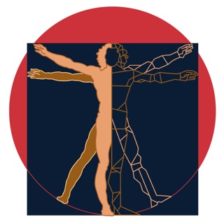In 1996, former Cambridge University Lecturer in Archeology, Steve Mithen who also has a Ph.D in Archeology from Cambridge, published a book entitled “The Prehistory of the Mind” with the subtitle “A search for the origins of Art, Religion and Science.” In many respects, this book has been touted as being more influential than anything that is written before in the history of Cognitive Archeology.
So what makes Mithen’s book so influential? The following are the reasons why I think this is so:
1.) It is very easy to read – If you ask me for a list of the top five recommended books to read on Cognitive Archeology, the “Pre-history of the mind” would probably be number one on my list. Having read thousand of pages of books and articles on cognitive archeology, this is probably the best one I have come across that is so easy to read. The reason for this is because Mithen intended this to be so. In the preface he wrote “I have tried to write a book that makes evidence from prehistory accessible to readers who may never previously have heard of an australopithecine or a hand axe.” Make no mistake however, easy to read does not mean “for beginners” only. The book contains deep and profound ideas and as Mithen said a “new theory for the evolution of the mind.” The language used is plain and simple and Mithen painstakingly dissected technical terms so that even ordinary readers can easily understand them. The 226 book is so easy to read that I finished it in less than a week! (And mind you I read only a few hours each day)
2.) It is well organised – If a book is a forest, a good book should give the readers both an eagle’s view and an ant’s view of the entire forest. An eagle’s view is where you can see the entire forest and an ant’s view is wherein you can zoom in the details of each tree. The 11 chapters in Mithen’s book are very much organized this way. He gives a good overview of his ideas and starts to zoom in the details in each chapter. Mithen starts off by emphasizing the importance of cognitive archeology then sorts through related literature that becomes the basis of his theory after which he then follows the chronological development of the supposed evolution of cognitive capacities of human mind from the first stone tool maker to the first appearances of arts and religion. Finally Mithen attempts to give an explanation on what started the “big bang” of human culture capping it off with a general discussion on the evolution of the mind.
3.) Mithen communicated his ideas very well – Not only is the book easy to read and is well organized but probably one of the main reason why the book is so influential is because Mithen communicated his ideas very well. Mithen gives a good overview of his ideas and zooms in on the details without loosing the readers in the technical mumbo jumbo and without loosing the general overall idea. Mithen also uses a lot of metaphors. His main theory which is “cognitive fluidity” compares the mind as a cathedral wherein different intelligence (linguistics, social, technical etc.) are chapels and that the modern human mind is where each chapel has door and windows enabling integration of knowledge from different domains of intelligence contrasting that with the early human mind wherein there are a few or even no doors and windows in each “chapel” of intelligence thereby restricting or limiting cognitive fluidity. Metaphors such as this make hard ideas easy to understand. Students who are just starting out in cognitive archeology would understand and be able to relate and remember more to this kind of presentation of ideas. These students will later on become the next generation of cognitive archeologist and no doubt after reading Mithen’s book, will surely be influenced by the ideas that he has presented as they have understood it very well.
4.) The book is very comprehensive and truly interdisciplinary – Mithen not only focused on cognitive archeology but he also invoked theories and used data from other fields such as migration theory, ecological and anthropological data and related them to cognitive archeology. To support his theory on cognitive fluidity, Mithen dug into the field of psychology and linguistics citing the works that of Jerry Fodor, Howard Gardner, Leda Comides, John Tooby among others and secured a strong foundation for his theory by anchoring it on the work of cognitive archeologist Thomas Wynn who in turned expanded on Jean Piaget’s theory that “Ontogeny recapitulates phylogeny.”
5.) The timing was perfect – Decades after its beginnings, archeologist has continued to ignore the cognitive approach and even up to the 1980s, archeologist in the United States did not give attention to cognitive archeology and continued to limit themselves within the bounds of processual archeology which is touted as “The new archeology.” Not only was cognitive archeology ignored, it was even criticized by some archeologist. Lewis Binford who is the poster boy for the new archeology has criticized cognitive archeology stating that it is only people’s actions rather than their thoughts that are preserved in the archaeological record. As the debate between processual and post processual archeology rages, new approaches to archeology began to be more recognized and accepted. As more book and papers were written on cognitive archeology the cognitive approach to the interpretation of archeological artifacts became noticed. With these developments in the world of archeology, the publishing of Mithen’s book in 1996 was just in time as it introduced a fresh perspective by providing a new theory on the evolution of cognition.
6.) A picture is worth a thousand words – Mithen’s book has over 70 illustrations making the presentation of his ideas much more easier to understand. Mithen also utilizes graphs, tables, maps and other graphics to drive home his point.
7.) Mithen wrote a book– That’s right, he wrote a book ! If he wrote a paper on cognitive fluidity it would not be that comprehensive as the expression of his ideas would be limited to several pages thereby restricting full expression of his ideas and he would fail to reach ordinary readers. I believe expressing ideas in a well written, well organized easy to understand book would be more influential than writing a very technical hard to understand paper that would be read only by scholars and people within the field. Mithen’s easy to understand book can be read by almost everybody making it one of the most influential cognitive archeology book ever written.
Interested in getting a copy of “The Prehistory of the mind” ? Get it at Amazon Today !
 Hi ! my name is Zigfred Diaz. Thanks for visiting my personal blog ! Never miss a post from this blog. Subscribe to my full feeds for free. Click here to subscribe to zdiaz.com by Email
Hi ! my name is Zigfred Diaz. Thanks for visiting my personal blog ! Never miss a post from this blog. Subscribe to my full feeds for free. Click here to subscribe to zdiaz.com by Email
You may also want to visit my other blogs. Click here to learn more about great travel ideas.

Leave a Reply